Born in Bangalore, Karnataka, in 1986, Saumyananda Sahi was the youngest participant in the Talent Campus India (2004), and the Berlinale Talent Campus at the Berlin International Film Festival (2005).
Over the last ten years Saumyananda has worked on both documentaries as well as fiction features with filmmakers such as Thomas F. Lennon, Kamal Swaroop, Arun Karthick, Anamika Huksar and Anne Aghion. His work has been screened in Film Festivals around the world, including at Sundance, Rotterdam, Locarno, Hot Docs and IDFA.
While for the most part working as a cinematographer, Saumyananda has directed two documentaries, and has been credited as an editor as well as art director.
Saumyananda graduated from St. Stephens College, Delhi, with a distinction in Philosophy, and studied Film Cinematography in the Film and Television Institute of India, Pune. He founded Skreen Films with his wife, Tanusree Das. He is currently based in Goa, India.
As a child, what were your early influences towards cinema?
I grew up in a village called Silvepura 35 kilometers north of Bangalore, and my family never owned a television. Going to see a film in the theater meant traveling into the city, which was both a long and bumpy ride. I remember one of the first films I went to see was ‘The Lion King’ when I was eight years old. But I was too frightened of the hyenas, and left the cinema hall crying. I was extremely unpopular – because thanks to me no one else in my family saw the film either, despite having driven all the way specially for the occasion.
I am the youngest of five children, and because of the big age differences between us I soon found myself like an only child at home – my older siblings having either moved to boarding school or to college. When I was eleven years old, my oldest brother Kiran returned home for his first summer holidays after joining the National Institute of Design in Ahmedabad. He brought with him some new friends, and a new exciting world – which included late night parties and films. The first ‘adult’ film I remember seeing was ‘Wild Strawberries’ by Ingmar Bergman, followed a few days later by ‘Stalker’ by Andrei Tarkovsky.
I have never forgotten the excitement of those viewings… also because I watched them without permission, almost without anyone realizing I was there. I was just the little brother who happened to be around.
Yet those films did not set me apart as a child. They allowed me a glimpse into adulthood – and allowed the adults on screen to share their deepest fears and hopes with a little boy. I felt privileged in a way I had never felt before. And I was possessed by the magic – by the effortless transportation into the lives and feelings of others.
I remember deciding that this was what I wanted to do. I wanted to make films.
How did you first become interested in cinematography? Did you start with photography?
My interest in cinematography grew out of my passion for cinema… I never saw the craft as something separate.
For a very long time, it didn’t matter what the specialization – I wanted to know everything. So I watched films and read about films with unstoppable greed. As we didn’t have any means to watch films at home, I was dependent on my two brothers. Throughout my adolescence, I would generally see one or two films a week, at the weekends – on pirated VHS tapes rented out from Bangalore. Later I started frequenting the screenings organized by various film societies in the city – sometimes it would be an informal screening for a small crowd on a 16mm or even 8mm projector, but there were also special festivals when 35mm prints would be screened as well. I will never forget watching ‘Closely Observed Trains’ – what an exhilaration that was!
I still have the first script I wrote when I was twelve, which was about a pig who becomes friends with a robot and dreams that the world is being drained of all its orange juice. Along with the action descriptions, I also wrote dialogues and made a storyboard of every shot. For many years, I was always scribbling down scripts. Writing was the best and only available way to imagine.
When I was thirteen, my parents bought me a 35mm point-and-shoot Olympus. I would get enough pocket money for one roll of film per month, so I was very careful every time I clicked. A friend of my brother, called Sanjoy Chakraborti, owned a Nikon EM 35mm SLR – and he taught me how to manipulate the shutter and aperture to take trick photographs, like double exposure and motion blurs. Another friend of my brother, Ramu Aravindan, set up a dark room and taught me how to process black-and-white negative and print onto photo paper with an enlarger.
When I was 16, I borrowed a MiniDV Sony Handycam from a friend in school, and this was the first time I recorded moving images. I played around with the camera for a whole weekend, filling up two 60 minute tapes with anything and everything that captured my imagination at home. Later I edited that footage into a 1 minute film, which got me selected for the Talent Campus India and later the Berlinale Talent Campus as well.
For the first few short films that I made, I did everything… with a little help from my friends. I wrote, I operated the camera, I recorded sound, I edited, I even acted. Each and every element seemed to be part of one single organic process, rather than separate crafts. When I thought of applying to the Film and Television Institute of India, I had initially wanted to apply for the course in Sound. But I did not qualify, because I had not studied physics in my 12th grade in school – which for some odd reason was a requirement for Sound, but not a requirement for cinematography. So I opted for cinematography instead.
Looking back, however, it would seem that I was preparing for cinematography from a long time back. My father is a painter, as is my brother. Images were a big part of my growing up. But I continue to believe, as I did when I was 11, that it is films that I want to make – and making moving images is in service of that desire. Cinematography is not a separate craft, it is not something else – rather, it is one of the players in the game, one of the instruments in the symphony.
What steps did you take to train yourself?
Kamal Swaroop used to joke that if you learn how to pan the camera, you have mastered the craft of cinematography. But experience has taught me that there is truth in that joke – for indeed, a simple pan can tell you a lot about a cinematographer, just as a simple brush stroke can tell you so much about an artist.
When you really think about it, panning the camera is terrifying – how and why does one start? Is the pan triggered by an external element, following an action? Or is it the pan of looking away from one thing to another? Or is it the pan of observing, very closely… unfolding like a scroll? How does one move across space? Does one stretch and linger on the way, or does one advance with the inevitability of a ticking clock? How does one stop?
There is a lot about cinematography that you can learn from books and films and from watching others work. But ultimately, when you hold the camera in your hands, you have to dance. And the thing about dancing is that it is about what your body knows – not your mind alone.
Arghya Basu had a maxim: “A camera is a machine, and I am not a camera.” I continue to reflect on those words, and unpack the many interpretations they offer.
Right now I am thinking: I am not a camera, but the camera can be me. It is this magical transformation of machinery into life, circuitry into thought, and light into feeling that we aspire for in cinema.
To train myself, I work. There is no way to learn how to dance, except dancing. There is no way to learn how to pan the camera, except panning… again and again and again, until the grease in the tripod begins to pulse and throb with your heart.
Have you assisted anyone? How does it help one?
When I graduated from the Film and Television Institute of India, I did not go in search of other established cinematographers to assist. I was lucky to have projects come my way, and so I began working as a cinematographer straight away.
However, while being a student at the Institute, it was an unwritten obligation that we would each assist on the projects of fellow students – within as well as across batches. But I feel ‘assist’ in this context is a very misleading word – because what was required was not halfhearted help, but trustworthy and fully committed teamwork. And while working on each others’ student films, what we learnt was that the person carrying the tripod up the mountain is an integral part of the team. If he or she took their job lightly, and stopped for too many cigarette breaks along the way, the whole purpose of going up the mountain would be put in jeopardy – because the sun never waits.
Indeed, the 1st Assistant Cinematographer and the 1st Assistant Director hold extremely crucial positions on set – they connect departments, and they carry humungous responsibilities on their shoulders… it is by no means easy, and it requires a very specific skill set. I have utmost respect for the people who can manage large productions.
However, in my opinion the job of an Assistant Cinematographer is not a stepping stone to becoming a cinematographer per say – just as the job of an Assistant Director is not necessarily a stepping stone to becoming a Director. Many people seem to approach ‘assisting’ as a stop gap learning process, or a wrung on the ladder, or a place to make contacts and pitch oneself forward. This attitude, I feel, breeds manipulation on both sides – the assistant merely using the project as a means to an end, and the cinematographer and production using the assistant as cheap or free labor.
How did your first film project come about?
The first fiction feature I worked on as a cinematographer was for Arun Karthick, who approached me after seeing some experimental shorts I had posted on Vimeo By that time I had already shot three documentary features that had been traveling in festivals, including Sunanda Bhat’s ‘Have You Seen The Arana?’ and Kamal Swaroop’s ‘Rangbhoomi’.
When Arun called me, I travelled to Trivandram to meet him – and saw the house around which his whole script revolved, and in which Arun himself was living. We talked and talked and talked, then I returned home. But one way and another Arun got together some money, and a few months later I returned to Trivandrum with Srikanth Kabothu, my batch mate, my friend, who has pulled focus and stood by me even at the most difficult of times. We shot the first half of the film in 8 days, but then had to stop because of various production setbacks. In the meantime Arun took the rushes to Arghya Basu, and after a few months of editing informed me that we wouldn’t need to shoot the second half of the script – the film was done.
The film went on to premiere at the International Film Festival of Rotterdam, in the Bright Future competition.
What is perhaps the most important factor for you to choose a script?
I do not choose scripts – I invest in people. It is very important for me to know the directors I work with, to know what he/she is possessed by, and the underlying intention behind their work.
Intention is everything: it is aesthetics, it is politics, it is ethics. The story will follow.
Raul Courtard once said that working with a director is like sharing a bed – and if you are going to share so much, and so intensely, for so many arduous days and weeks and months, you had better get along. In a similar vein, Robert Bresson wrote that his choice of actors was based on whether or not they would take him where he wanted to go – which, I feel, can be applied to any collaboration.
Will you take me where I have never been?
Is cinematography intuitive or is it something you learn?
In this context, I would like to speak about two aspects of cinematography.
The first is the craft. This is a skill – like the ability to play a musical instrument. Your body needs to be in tune with the instrument – the mechanical and electronic gadgetry of the camera – and your eye needs to be in tune with the light. In my experience there are no two ways about this: you need practice. And however much you practice, you can always practice more.
The second is the art. This is a way of seeing, a way of hearing, a way of thinking – and a way of communicating your world to an audience. This is where cinematography becomes indistinguishable from cinema.
No doubt, there is a lot of theoretical knowledge that can be gleaned from history and the works of others. But I believe that ultimately your sensibility is a gift. I cannot imagine how you could go about learning how to see or hear or think – you can only realize how you see, in the same way that you can become aware of the rhythms of your own body.
Yet there is no art without craft. And every craft has the ability to become art, if it can embody and communicate a world. The two are inseparably connected.
Intuition does not go far without the skills to act upon it. And what are ideas without the words to express them?
Tell us about your latest film.
The last fiction feature that I shot was with the same director as my first: Arun Karthick. The film is called ‘Nasir’, about a day in the life of an apparel salesman in the city of Coimbatore. And as his day unfolds, we find this man to be nimble, romantic, marshaling a love of love, song, children, friendship and even God to rise into something resembling a life well-lived. But the increasing communal bigotry has other plans.
We shot the film on the Digital Bolex with 16mm Zeiss Mark III Super Speed lenses, with an aspect ratio of 4:3.
I will not say any more, as the film is still awaiting its World Premiere. But I cannot wait for the film to be shared with an audience, as it is a film I hold very dearly.
Where do you seek inspiration from?
The thing about inspiration is that it is not a conscious process. It would be ridiculous to decide one fine day that “Today I want to find inspiration” – and go to the nearest library and pick up some books at random.
No doubt, such a trip to the library can do no harm. You might even chance upon something that will surprise you, and find that a new idea accompanies you back home like the oxygen you have breathed and the food you have eaten along the way, its contents slowly entering your bloodstream.
But if you are so intent on finding inspiration that you don’t want to look for anything else, it is unlikely that anything will surprise you, and you will return home frustrated.
I make many trips to bookshops, I read many books, I travel, I enjoy discussions, I like to look at paintings and listen to music, I enjoy meeting new people and seeing new things. I enjoy watching films and TV series. I enjoy eating good food. I enjoy eating junk food. I have found that learning how to cook has over the years changed how I think. I watch my son grow up, and observe the things he observes along the way. I try to remember what it was like to be a 2-and-a-half-year-old. Every time I look out of a moving vehicle, I wonder at the mystery of finding myself in my own body rather than under the skin of someone else. What if I was that woman, crossing the railway tracks? What if I was that man at the gas station, tanking up trucks with diesel?
Inspiration is a story. And you do not find stories – stories find you. And when a story finds you, you cannot help being possessed. It becomes you.
All one can do is open up our eyes and ears and minds to osmosis and photosynthesis. And make our visitors feel welcome.
What is in the kitty right now?
At present I am filming two documentary features – one of which has been going on for 6 years, with Anne Aghion. I am also involved in three fiction features as a cinematographer, which are in various stages of pre-production. And I am developing a Bengali feature which I hope to shoot and direct in the second half of 2020.
What’s your dream project?
Akira Kurosawa had the best answer to this question: My next one. I concur.
Your most memorable blunder?
Once I was filming with a Sony PD170, and was under the impression that I was recording when I had pressed pause and vice versa.
When I imported the rushes, it took me some time to understand what had happened. The image was in a total frenzy, with heated discussions and disagreements between team members serving as a voice over, until the camera was placed on a tripod and framed and then everyone fell silent – at which point it cut.
I wish I had envisioned that shot on purpose. It was certainly better than the shot I failed to record!
Any advice to the aspiring cinematographers?
Aspire for cinema, not cinematography!
What book, music, movie are you enjoying right now?
Book: ‘Collecting Himself: James Thurber on Writing and Writers, Humour and Himself’ Edited by Michael J. Rosen
Music: Kimmo Pohjonen and Kronos Quartet
Movie: ‘Lazzaro Felice’ by Alice Rohrwacher
Ghode Ko Jalebi Khilane Le Jaa Riya Hoon (dir. Anamika Huksar)
Eeb Allay Ooo! (dir. Prateek Vats)
‘Balekempa’ (dir Ere Gowda)
‘Rangbhoomi’ (dir. Kamal Swaroop)
https://www.youtube.com/watch?v=xFf-_IhaIf4
‘Sacred’ (dir. Thomas Lennon) (as segment producer and cinematographer for the India section)

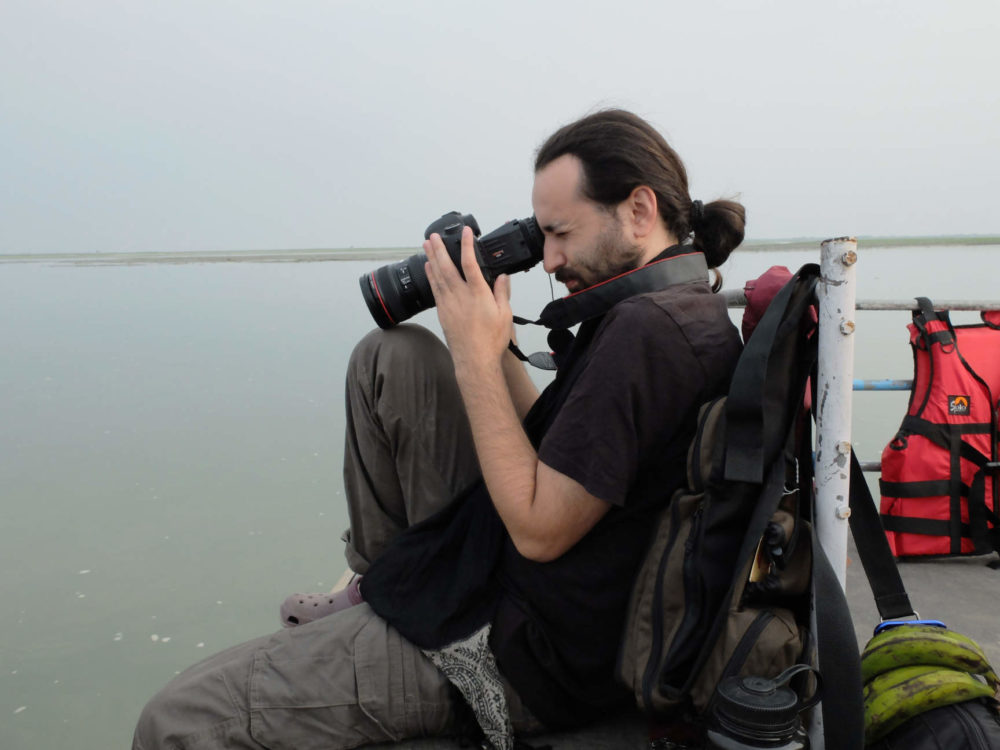
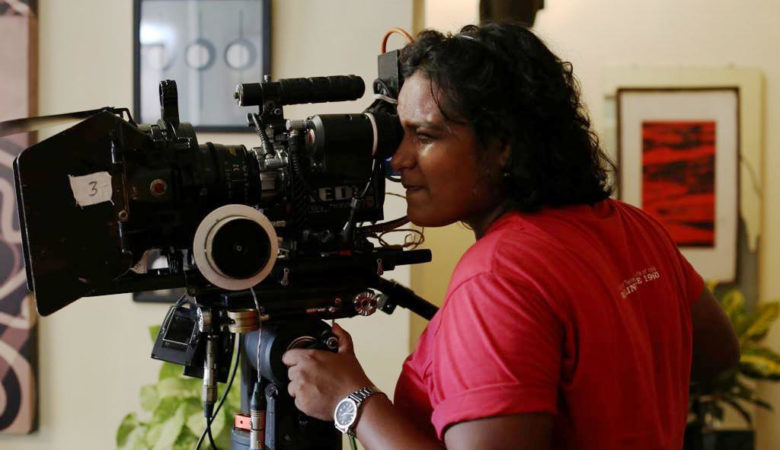
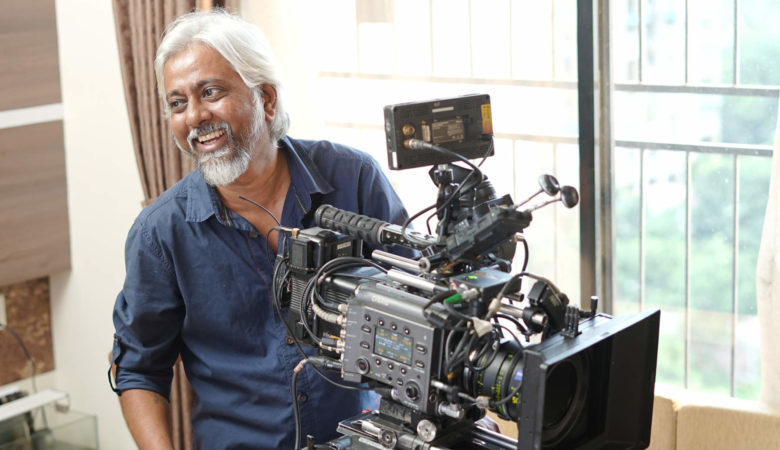
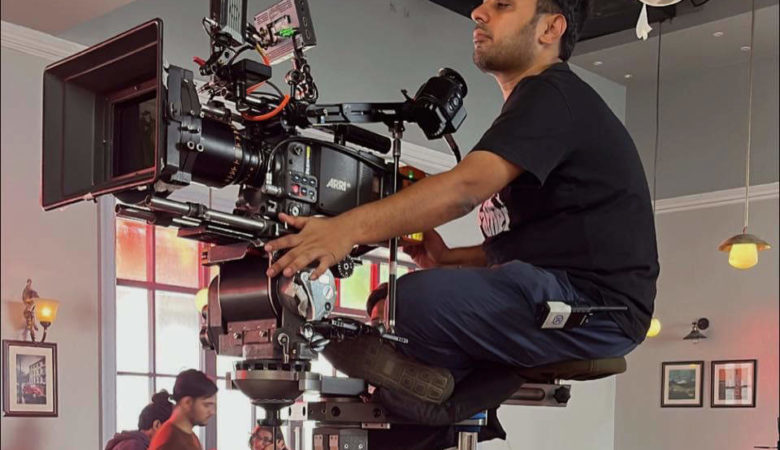
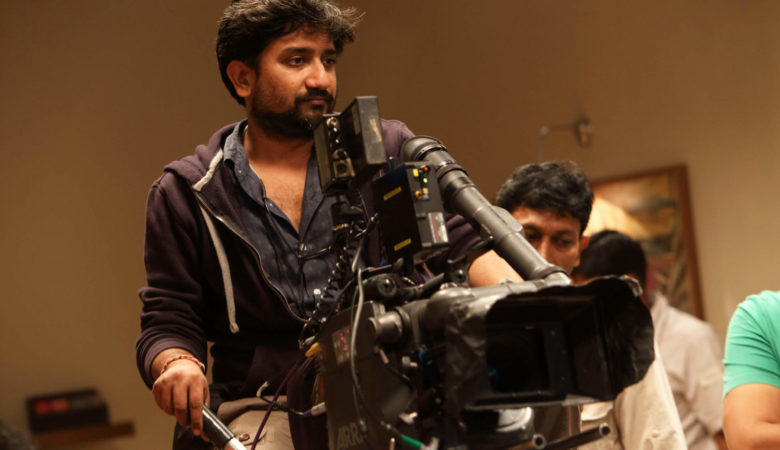



Leave a Reply